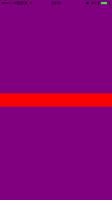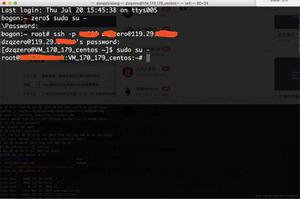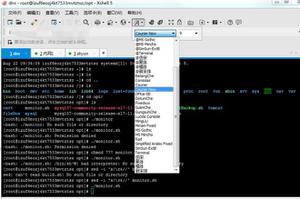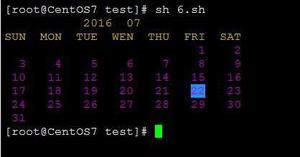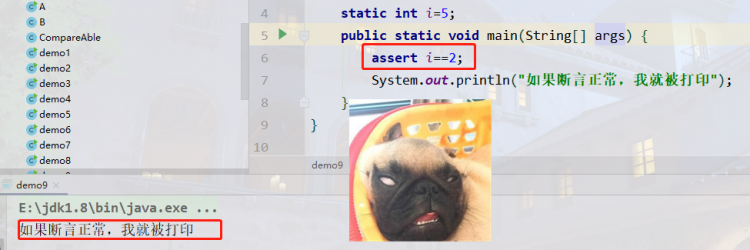语义分割中图像格式报错 error: (-215:Assertion failed)

问题完整代码
``
import numpy as npimport argparse
import imutils
import time
import cv2
# construct the argument parse and parse the arguments
ap = argparse.ArgumentParser()
ap.add_argument("-m", "--model", required=True, default='--model enet-cityscapes/enet-model.net',
help="path to deep learning segmentation model")
ap.add_argument("-c", "--classes", required=True, default='--classes enet-cityscapes/enet-classes.txt',
help="path to .txt file containing class labels")
ap.add_argument("-i", "--image", required=True,
help="path to input image")
ap.add_argument("-l", "--colors", type=str,
help="path to .txt file containing colors for labels")
ap.add_argument("-w", "--width", type=int, default=500,
help="desired width (in pixels) of input image")
args = vars(ap.parse_args())
# load the class label names
CLASSES = open(args["classes"]).read().strip().split("\n")
# if a colors file was supplied, load it from disk
if args["colors"]:
COLORS = open(args["colors"]).read().strip().split("\n")
COLORS = [np.array(c.split(",")).astype("np.uint8") for c in COLORS]
COLORS = np.array(COLORS, dtype="uint8")
print ('All COLORS: \n{0}'.format(COLORS))
# otherwise, we need to randomly generate RGB colors for each class
# label
else:
# initialize a list of colors to represent each class label in
# the mask (starting with 'black' for the background/unlabeled
# regions)
np.random.seed(42)
COLORS = np.random.randint(0, 255, size=(len(CLASSES) - 1, 3),
dtype="uint8")
COLORS = np.vstack([[0, 0, 0], COLORS]).astype("uint8")
# initialize the legend visualization
legend = np.zeros(((len(CLASSES) * 25) + 25, 300, 3), dtype="uint8")
# loop over the class names + colors
for (i, (className, color)) in enumerate(zip(CLASSES, COLORS)):
# draw the class name + color on the legend
color = [int(c) for c in color]
cv2.putText(legend, className, (5, (i * 25) + 17),
cv2.FONT_HERSHEY_SIMPLEX, 0.5, (0, 0, 255), 2)
cv2.rectangle(legend, (100, (i * 25)), (300, (i * 25) + 25),
tuple(color), -1)
print (tuple(color))
# load our serialized model from disk
print("[INFO] loading model...")
net = cv2.dnn.readNet(args["model"])
# load the input image, resize it, and construct a blob from it,
# but keeping mind mind that the original input image dimensions
# ENet was trained on was 1024x512
image = cv2.imread(args["image"])
image = imutils.resize(image, width=args["width"])
blob = cv2.dnn.blobFromImage(image, 1 / 255.0, (1024, 512), 0,
swapRB=True, crop=False)
# perform a forward pass using the segmentation model
net.setInput(blob)
start = time.time()
output = net.forward()
end = time.time()
# show the amount of time inference took
print("[INFO] inference took {:.4f} seconds".format(end - start))
# infer the total number of classes along with the spatial dimensions
# of the mask image via the shape of the output array
(numClasses, height, width) = output.shape[1:4]
# our output class ID map will be num_classes x height x width in
# size, so we take the argmax to find the class label with the
# largest probability for each and every (x, y)-coordinate in the
# image
classMap = np.argmax(output[0], axis=0)
cv2.imshow("classMap", classMap)
print (classMap.shape)
# print (classMap)
# given the class ID map, we can map each of the class IDs to its
# corresponding color
mask = COLORS[classMap]
cv2.imshow("mask", mask)
# resize the mask and class map such that its dimensions match the
# original size of the input image (we're not using the class map
# here for anything else but this is how you would resize it just in
# case you wanted to extract specific pixels/classes)
mask = cv2.resize(mask, (image.shape[1], image.shape[0]),
interpolation=cv2.INTER_NEAREST)
classMap = cv2.resize(classMap, (image.shape[1], image.shape[0]),
interpolation=cv2.INTER_NEAREST)
# perform a weighted combination of the input image with the mask to
# form an output visualization
output = ((0.4 * image) + (0.6 * mask)).astype("uint8")
# show the input and output images
cv2.imshow("Legend", legend)
cv2.imshow("Input", image)
cv2.imshow("Output", output)
cv2.waitKey(0)
if cv2.waitKey(1) & 0xFF == ord('q'):
exit
`
报错信息Traceback (most recent call last):
File "segment.py", line 91, in <module>
cv2.imshow("classMap", classMap)
cv2.error: OpenCV(4.1.1) C:/projects/opencv-python/opencv/modules/highgui/src/precomp.hpp:131: error: (-215:Assertion failed) src_depth != CV_16F && src_depth != CV_32S in function 'convertToShow'
以上是 语义分割中图像格式报错 error: (-215:Assertion failed) 的全部内容, 来源链接: utcz.com/a/156954.html



